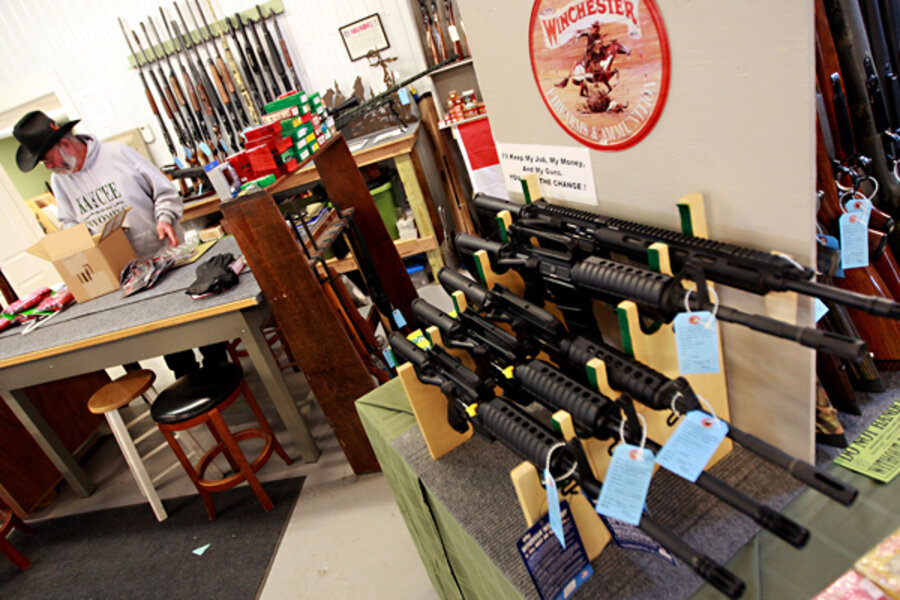The estimated economic impact of the US firearms industry in 2012, according to data from the National Shooting Sports Foundation. That’s up from $27.8 billion in 2009, due to job creation and new sales taxes. 26,325 new gun-related jobs have been created over the past two years, according to the NSSF.
And while tracking concrete sales numbers of firearms in the United States is tricky, federal officials report that they were higher than ever in 2012. Through the end of November, the FBI recorded 16.5 million background checks for gun purchases in 2012 – the highest figure since the FBI began tracking such data in 1998. And the actual number of guns sold is likely higher, because registrants can buy multiple guns.
Two factors in recent history have had a tendency to send sales soaring. As staff writer Linda Feldmann reported in July, gun sales usually spike in the days following a mass shooting. Background checks rose 41 percent in Colorado in the aftermath of the Aurora movie theater shooting over the summer, and sales spikes followed Columbine and the 2011 rampage in Tucson, Ariz., as well.
The second factor is politics. Sales spiked in anticipation of both of President Obama’s elections, in 2008 and 2012, and stock in firearms manufacturers like Smith & Wesson soared, as buyers feared legislation that would clamp down on Second Amendment rights or restrict their ability to purchase a gun.








